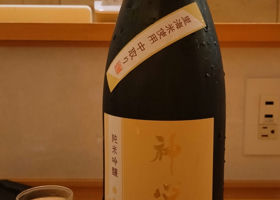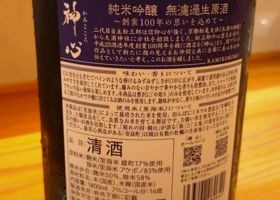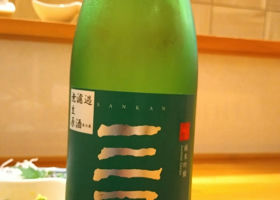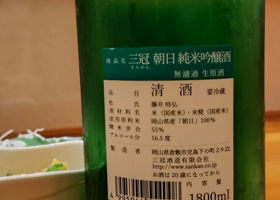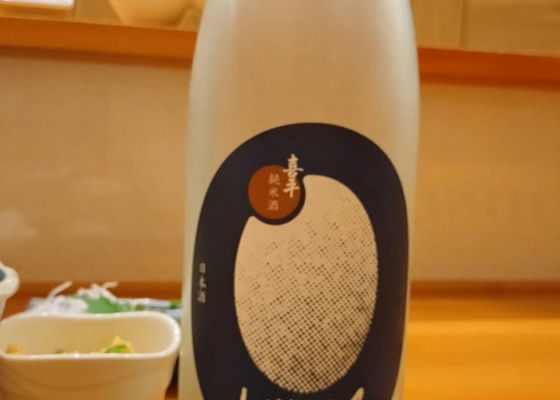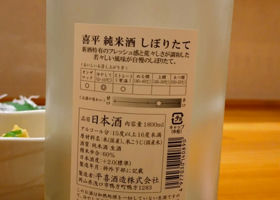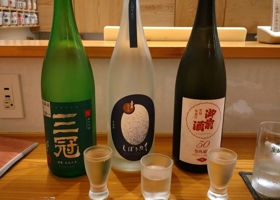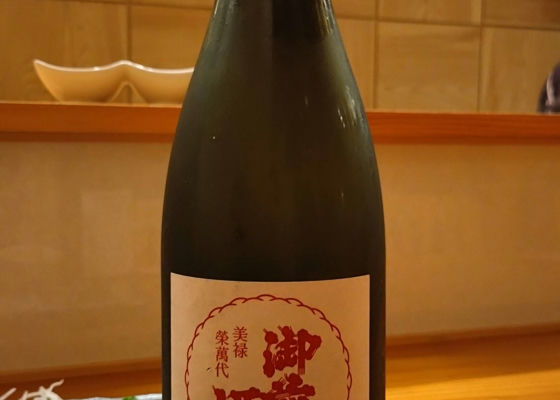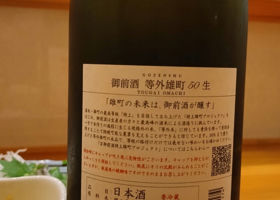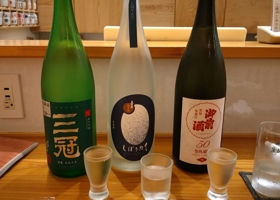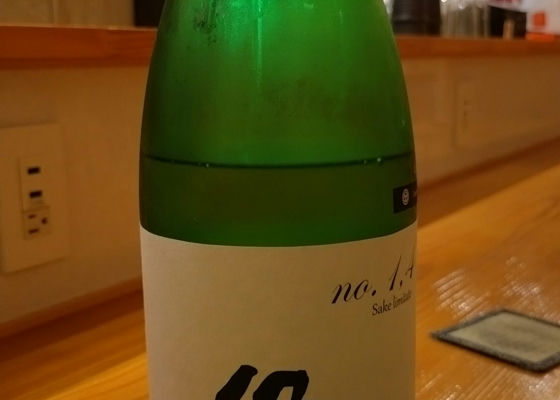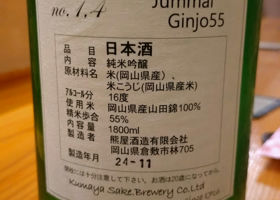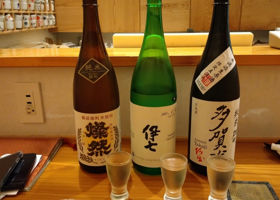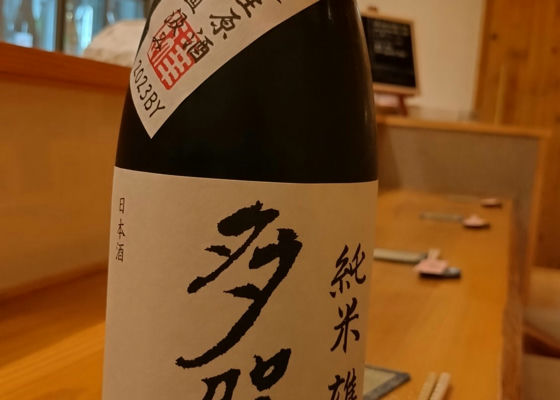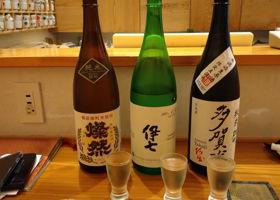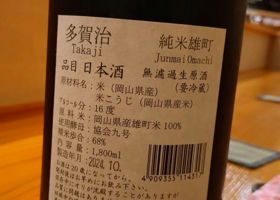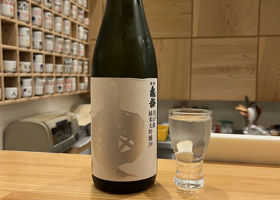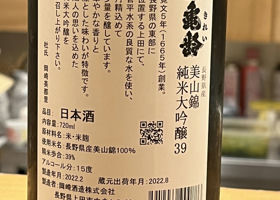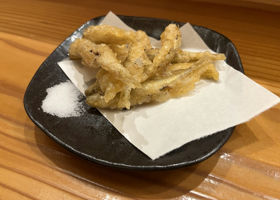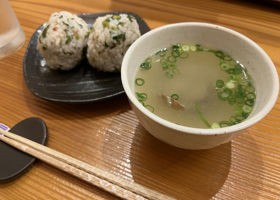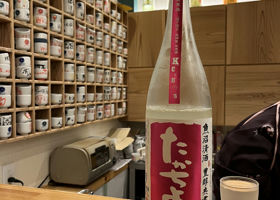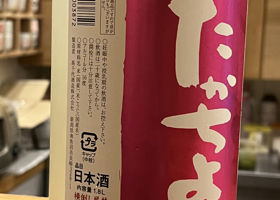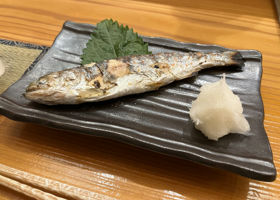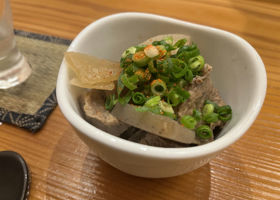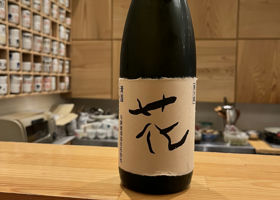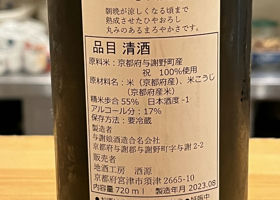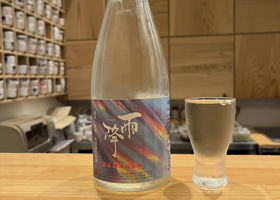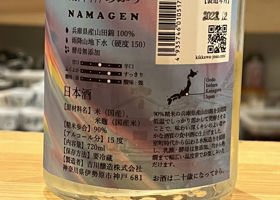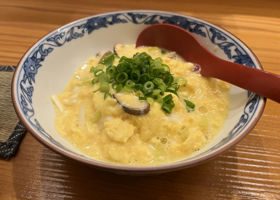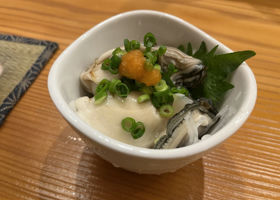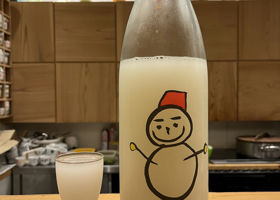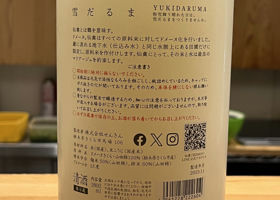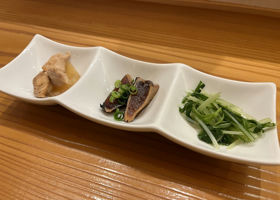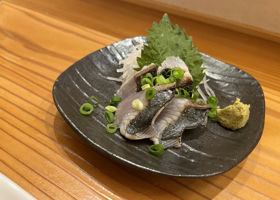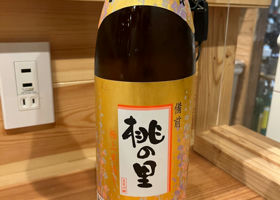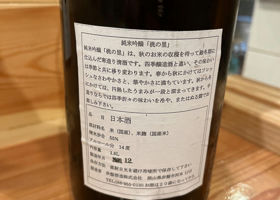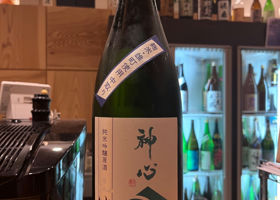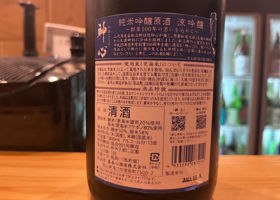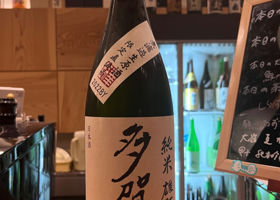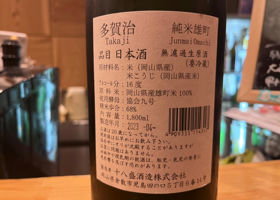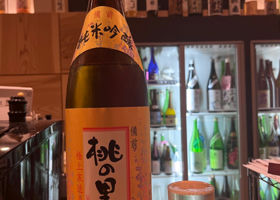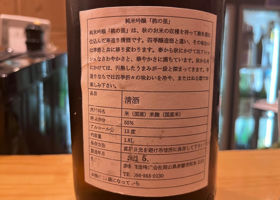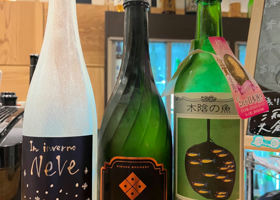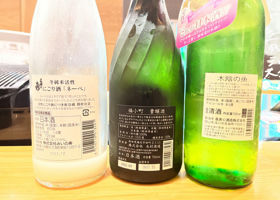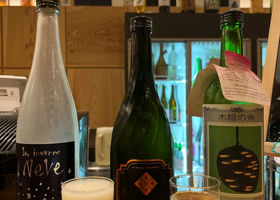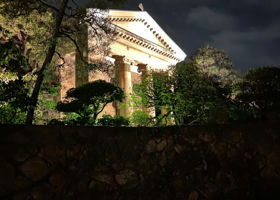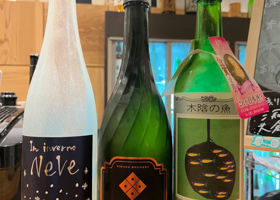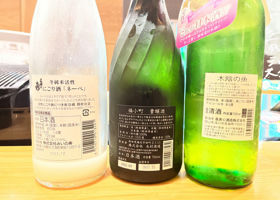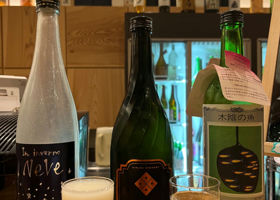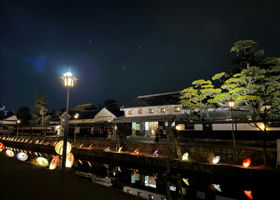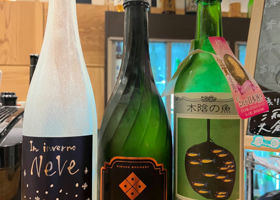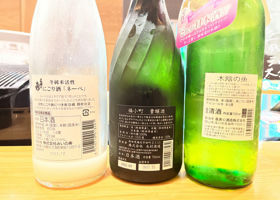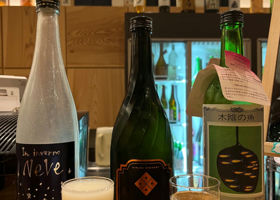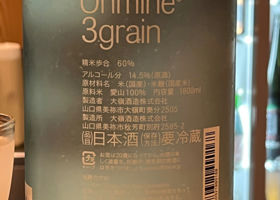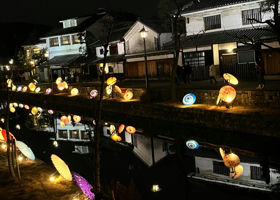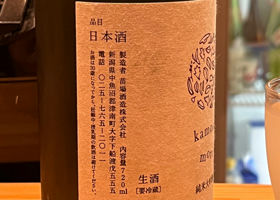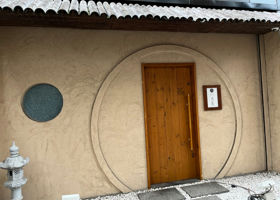Timeline
obayoStore recommendation. Commemorative sake for the 100th anniversary of the company's founding. obayoSake tasting and comparison of 3 kinds of Okayama sake obayoOkayama Sake
Tasting set, 3 kinds of sake. Okayama Kihei Omachi, Shiboritate. obayoKurashiki sake, 3 kinds of sake tasting set for comparison. Okayama, Yamada Nishiki. obayoThree kinds of Kurashiki sake at Japanese Sake BAR Marugen, a sake tasting and drinking set. 18 Mori Sake Brewery. Omachi しんしんSYThe proprietress asked me what I was going to drink tonight.
When I saw the cold storage, I thought it would be the Shinshu Kamerei with the turtle mark!
I had been thinking that I would definitely drink it when I found it!
The proprietress suggested that we could compare three kinds of Shinshu Kamerei tonight!
But I'm going to stick to my original intention and finish with four kinds tonight!
So, this Kamerei, please!
It is polished to 39%.
It was a delicious fruity sake, just the way I like it!
The next morning, we check out early, so let's finish up here.
I'll take one onigiri (rice ball) as a souvenir for the end of the day!
I'll visit again when I get a job in Okayama or Kurashiki.
extensive knowledge
Alcohol content - 15
Sake degree
Rice used: 100% Miyamanishiki from Nagano Prefecture
Polishing ratio 39 しんしんSYWhile there were not many customers, I had a chance to look around in front of the cold storage room.
Among them, I had to try this one!
Hiragana Takachiyo with a beautiful shocking pink color!
As expected, it was my favorite fruity sake!
Stewed river fish and beef tenderloin!
How could it not go well with sake?
Marumoto-san, I'm glad I chose it after all!
extensive knowledge
Ingredients rice(domestic),rice malt(domestic)
Alcohol percentage 16 or more, less than 17
Rice used: Undisclosed
Polishing ratio Not disclosed
Yeast used Not disclosed
Sake degree Not open to the public
Acidity Not disclosed
Nama/Hiirei Nama しんしんSYUnknown bottle seen from the counter in the back
Flowers on the label🌸
They brought it to the counter and showed it to me.
It's a sake from Miyazu, Kyoto.
I regretted passing on drinking it this time 🙅.
I couldn't find it on the internet.
I wonder what kind of sake it was.
It's annoying 😵💫
extensive knowledge
I'll write about it next time I encounter it Afuriあふり NAMAGEN 純米 兵庫県産山田錦 水酛無濾過生酒純米生酒無濾過 しんしんSYLet's narrow it down to four kinds today.
We were seated behind the counter, but you can barely see the cold storage!
That four-pack looks like a rainfall!
So I asked the proprietress to serve it to us!
She said, "It's mizu-hashiroshi.
Please do!
In the past, I drank a pink labeled Amezure and it gave me an impression that it was a good sake to start with, but this rainbow 🌈 labeled Amezure has quite a distinctive taste!
If anything, the acidity stands out!
It is similar to Kijoshu.
Okayama's famous Kiara egg dish!
Three big raw oysters from Nissei town!
Unbearable!
I found a rare sake that is as good as such a dish!
extensive knowledge
Rice polishing ratio: 90
Rice used: Yamadanishiki from Hyogo Prefecture
Brewing water: Amezan groundwater (150 hardness)
Yeast: No additives
Alcohol content: 15 Senkin雪だるま しぼりたて活性にごり酒生酒にごり酒発泡 しんしんSYAt Kurashiki Marugen
A restaurant I visited last year at this time of the year and liked it.
This time with my wife.
I always follow them on SNS.
The latest news was that they had just the right amount of sake in stock!
Unlike last time, we started with the yellowtail shabu-shabu, and this time we asked for the course to be left to us!
Let's start with a light nigori sake!
Senkin Snowman
Pichi pichi shuwashi shuwashi!
It's the perfect start to a sweet day!
Let's keep it down today!
Seared Sashimi
It was a local fish, but I lost the name!
But it was delicious and unforgettable!
a wealth of knowledge
Rice: Yamadanishiki (Sakura City, Tochigi Prefecture)
Rice Polishing Ratio: Koji Rice 50%, Kake Rice 60%/
Alcohol content : 13% (Unpasteurized) DKSIt is quite sweet and fruity. It is thick and easy to drink, and I like it. 凜のすけ⭐️⭐️⭐️⭐️⭐️
Japanese sake BAR Marugen
Junmai Ginjo-Ginjo-Genshu 13% alcohol
Koji rice / Satoumi rice Omachi 20% (50%)
Kake rice/ Satoumi rice Akebono 80%(58%)
Association 901 yeast
The acidity comes forward, reminding us of the summer coolness of Okayama's famous "Shine Muscat" 😊.
4th glass
Omine Summer Kasumi
5th cup
Hakusen Doburokku
6th cup
Kudokibe Jr.'s Mystery Girl
Thai nameko, delicious 😊.
The first cup of rice the first cup
Shinsei 2022
? The 1st cup
Abe Akada & Kamiwa Shinden
? The 1st cup
Jyushiyo Ginzen
Simmered yellow chives with egg 凜のすけ⭐️⭐️⭐️⭐️
Japanese Sake BAR Marugen
Junmai 16%.
Omachi from Okayama 68% 2023.04
Yeast/Association No. 9
Everyone loves unfiltered raw sake😊Good for Okayama Prefecture😊. 凜のすけ⭐️⭐️⭐️⭐️
Japanese Sake BAR Marugen
Junmai Ginjyo 13% Japanese rice
Domestic rice 55% 2023.05
When I entered the bar with my Hanayo backpack, the waitress found out I like sweet sake and recommended it to me 😊.
The sweetness is pleasant😊The cup was emptied in no time🥺👍. しんしんSYThe second type, Fukukomachi Kikuzake, was also sweet, but this one was even sweeter and more sour!
I checked and found that I had had this the last time I was in Okayama in the fall.
My impression at that time was that it was a white wine with a sour taste.
But each of these three wines has its own characteristics, and I think they were just right to finish off my sake!
After all, it was -55 from -39!
I made sure to remember the fish in the shade of the tree!
I went to Marugen for two days!
I will visit again when I come to Kurashiki!
extensive knowledge
Winner of the Gold Prize at the Feminaries World Wine Competition 2022, a unique international competition selected by female wine experts from around the world!
One sip and you'll think, "What? This is sake? This is a sake with a new sensation that makes you want to say "What? It has a sweet and sour, refreshing flavor reminiscent of apricots and plums, and its low alcohol content of between 8% and 9% makes it easy to drink even for those who are not so fond of alcoholic beverages. If you have never had this sake before, the new sake "Kiin no Uo" is clearly different from the sake you have been drinking until now.
Alcohol 8 degrees
Sake degree -55
Acidity 4.5 しんしんSYSecond, Akita sake in the middle
Fukukomachi Kojo-shu.
I thought it might be sweet, but it is surprisingly light sweetness and delicious!
I guess this is a good way to end the meal!
The owner told us that the next one would be even sweeter!
What kind of sake is it?
(a brief description of the secrets of this dish)
Kijoshu is usually brewed using junmai-shu (pure rice sake) instead of brewing water during the distillation process. However, Fukkomachi's kijoshu is made with junmai-daiginjo instead of junmai-shu, which gives it a more elegant and smooth taste and a rich aftertaste.
The sake has a smooth and elegant mouthfeel and a rich aftertaste. Furthermore, the alcohol content has been kept in the 13% range, so the sake has a high extract content and, like a ripe fruit, is richly mellow and sweet, yet smooth to drink with a clean finish.
Rice: Akita Sake Komachi
Rice polishing 55
Yeast: Akita yeast No.12
Alcohol content 13.5
Sake meter degree -39
Acidity 1.9 しんしんSYYellow-tail shabu-shabu (shabu-shabu with amberjack)
Now that we've had our fill, it's time to wrap it up!
Lightly seared onigiri rice balls were served!
The owner told us to pour the soup stock into this bowl and enjoy!
But we put the onigiri into the pot with the rice ball and had ojiya (rice porridge)!
Let's finish the comparison with not two but three kinds of sake!
First, a selection of jackets found in the cold storage!
Winter atmosphere, active nigori!
It's dry with a strong rice flavor!
What about the other two?
Knowledge
The rich ooze has a freshness like that of a green apple. This nigori sake is not sweet, but dry and pleasantly effervescent.
Rice used: Yume-ichikkyo
Rice polishing ratio: 60
Yeast: ---- (yeast)
Alcohol content: 14%.
Sake degree: +6
Acidity: 1.5 大嶺Ohmine 3粒 春風かすみ生酒 愛山純米生酒おりがらみ 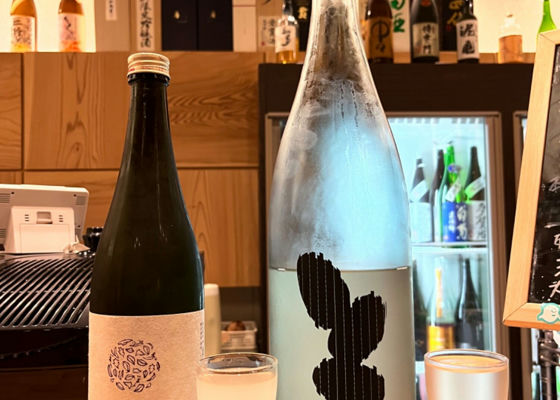
しんしんSYThe comparison was Oomine, which the guest next to me had drunk the day before and I was curious about.
Lightly cloudy
It is refreshing and delicious!
It is a good combination with the sweet sake Kosumori.
The owner taught me the meaning of the number of rice grains on the Omine label!
The Kurashiki Bikan Historical Quarter is within walking distance from the store.
Quite a nice atmosphere!
extensive knowledge
Ohmine presents a series of seasonal tidings, Kasumi Nama-zake. This product is "Harukaze Kasumi Nama-zake" made with Aizan, which brings an early hint of spring around the time of Risshun. This product is made from Aizan, which is carefully grown by contract farmers in the special A district of Yoshikawa Town, Hyogo Prefecture. The large white-colored Aizan grapes are carefully polished to 60% to prevent cracking.
The warm, gorgeous, and clear aroma is reminiscent of a spring breeze, which is also in the product name. On the palate, the floral bloom and refreshing fruitiness, like muscat and lychee, make you feel light and airy. The corkage creates a smooth mouthfeel, expressing not only freshness but also a deep umami flavor. Fresh, Ohmine-like acidity and complex flavors converge on the palate, gently blowing through and disappearing, leaving a light lingering finish. 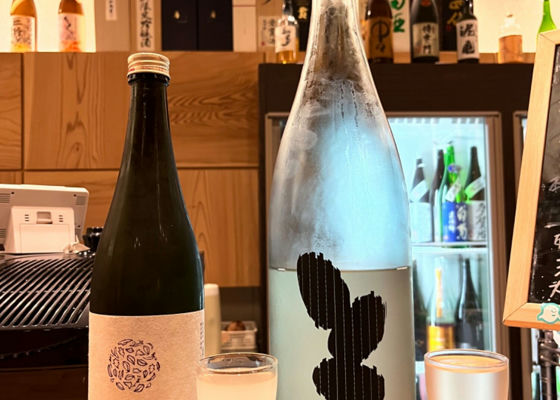
しんしんSYThe restaurant is full!
The owner and his two waitresses are busy with their work.
We joined the conversation of two other customers at the counter and served drinks to the owner as well!
It was a nice evening!
So we decided to order two drinks at a time!
Let the sake comparison begin!
We started with this one as we discovered the brewing forest!
Junmai Daiginjo!
I love fruity and umashuwa!
Sweet and easy to drink as expected!
Let's match it with the other one, Nigoromi!
extensive knowledge
Kozo-Sumori takes a lot of time and effort to make its sake, with one-stage brewing, bag-hanging, and unfiltered raw sake, but this Junmai Daiginjo is made with the most time and effort, and the rice is polished to the highest standards. This junmai daiginjo is made with the utmost care and polishing of the rice. The flavor has a dense sweetness and a bouncy aroma that is unlike anything we have ever tasted before. As soon as you open the cork, you will be immediately overwhelmed by the rich, sweet aroma that also includes acidity like that of grape and pineapple. When you pour it into a glass and taste it, you can feel a dense and incomparably sweet flavor. However, thanks to the acidity, the wine is not at all just sweet and cloying. It is a perfect match for dishes with rich flavors, and it enhances and enhances each other without losing any of the richness. RecommendedContentsSectionView.title
